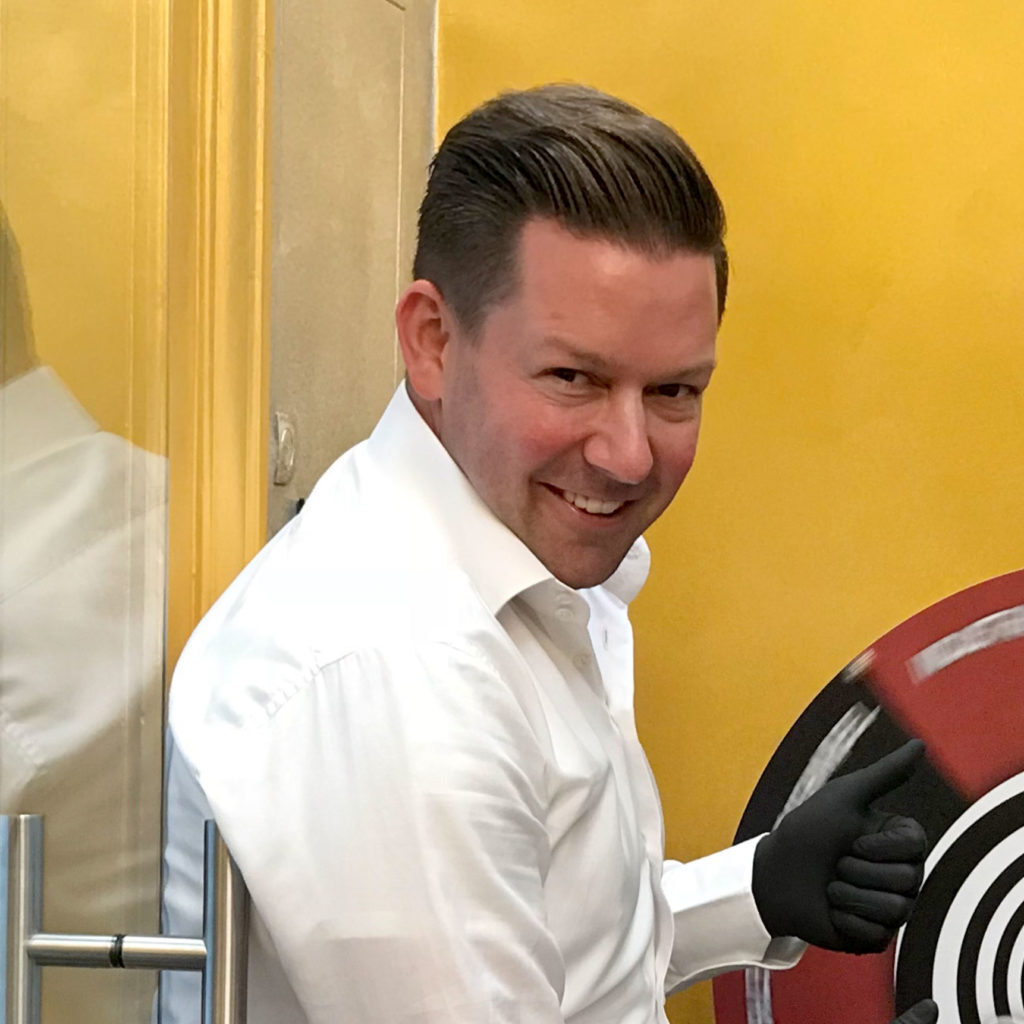Surface-Piercing
A surface piercing is any body piercing which is performed on a surface of the body/skin which is neither convex nor concave (i.e. flat skin surfaces which neither protrude nor are indented—in other words any area where the skin does not fold).

The entry and exit canal of the piercing are on the same plane/surface, hence the name “surface piercing”. Because surface piercings are usually subject to considerable tension, they can be rejected and grown out of the skin more frequently than other kinds of piercing.
With the right choice of jewelry and placement the risk of it quickly growing out can be minimized. This is why we use 90° titanium surface bars, or (rarely) PTFE bar material.
Jewelry:
The so-called surface bars are specially designed for surface piercings. These are barbells with two 90° bends at the end (going in the same direction) which reduce the pressure on the piercing’s exit canal.
Flexible PTFE jewelry is also a popular choice. The straight shape of this material does adapt itself to the curvature of the piercing canal, but due to its tendency to reassume its original line, it ends up exerting constant pressure on the canal. That is why we recommend using titanium surface bars.
The length is up to the individual customer, but we do make sure that the dimensions are suited to the individual.
Once the piercing has been performed, the length can no longer be altered. As for the balls themselves, the customer is free to select the color s/he wishes.
Healing:
A surface piercing can take between 2 and 4 months to heal completely, rarely longer. However, the healing process of a surface piercing is a little longer than for a regular piercing, due to the pressure exerted on the skin. Like other external piercings, in the first three weeks it should be cleaned with ProntoLind spray twice a day, and then coated with ProntoLind gel. It is important to wash your hands before touching the pierced area and the jewelry itself. By caring for the piercing in the correct manner and with the proper materials, you will rarely have to deal with cases of proud flesh.
Disinfectant solutions containing alcohol or chlorine should be avoided.
Placement:
A vital aspect of surface piercing is gauging the correct depth of the piercing canal. If the surface bar is not deep enough, the jewelry will be too loose. The ends will protrude too far from the piercing canal, which will cause them to lean to one side or the other and irritate the surrounding tissue. On the other hand, if it is too deep, the balls will press on the skin and lead to rashes and possible inflammation.
Therefore, the piercer must study the area well in order for the piercing canal and the jewelry to be properly calibrated.
A surface piercing can be performed anywhere on the body—from head to toe. This allows the customer to be as creative as she wishes to be.
Traditional surface piercings:
The most popular surface piercings include the eyebrow piercing, which was a new and popular trend in the 1990s, and the bridge piercing which, as the name suggests, is placed on the bridge of the nose.
In the genital area, popular piercings include the Christina for women and the pubic piercing for men. The Hafada piercing performed on the scrotum is a relatively simple procedure compared with other areas and the healing process is considerably faster and more straightforward, too.
In the neck area, the most common piercings are the nape piercing and the Madison piercing, which is done in what is technically known as the suprasternal notch.
In hand web piercing the canal is executed between two fingers. In addition to the usual problems associated with surface piercings, this type of piercing is complicated by the friction and rubbing that it is subject to on a daily basis.
Marc
and Piercer
Online reservation for the piercing of your choice
More than 40.000 hiqh-quality piercings and tools.



